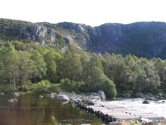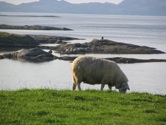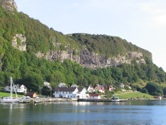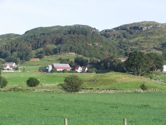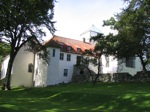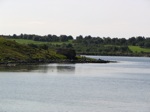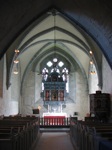I spent a few hours napping in a departure lounge of Frankfurt airport this afternoon waiting for my Oslo flight. Sitting behind me was a middle aged Japanese man, an engineer of some kind who works on those traffic computers found in cars. He is off to Oslo on a business trip and it is apparently his first time to Scandinavia.
I learnt all of this because I overheard his conversation with a young bespectacled Norwegian girl who is on her way back from spending five weeks in Nagoya and Nara on a Lion’s Club exchange program. She is from Trondheim and school is starting again tomorrow. She might have to spend the night at the airport though because her flight arrives late and she may miss the last bus back to her hometown, some forty five minutes away. I couldn’t help wondering if she was from a town near my own mother’s hometown which is also a bit of a drive into the country from both Trondheim and its airport.
I heard large chunks of the conversation as I dozed in and out of sleep and concluded that the whole thing must have been quite a shock for the poor Japanese man. They spoke in English to each other but he had great difficulty expressing himself in the language. He had problems on all fronts; pronunciation, grammar, and vocabulary. I don’t think he understood everything she said either, since the woman had to repeat herself often and his answers often seem to be in response to questions other than those she had asked. Other times he seemed to just be at a loss for words.
The woman did 95% of the talking and she had quite a bit to tell her new friend about what she thought about Japan and what Norway was like. She told him that she had visited a factory in Nagoya belonging to the company he worked for and she said they made many “clever” things. She also said she visited a factory where miso was made, and her disgust at this process put an immediate and permanent end to her miso consumption.
She told him she was worried about how he would react when he got to Norway and discovered how short he really was. “You are so short. Japanese are all so very short. I thought I was short since my boyfriend is 185 but you are really short. Why are you all so short?” I heard only a long “Uhhhhh…” in response before she continued with more of her observations.
The next time I focused in on their discussion I think they were discussing her home-stay situation in Japan. I suddenly heard her say, “You know in Norway we share….you know women and men….we all share. My boyfriend—he likes to cook. He cooks all the time. And the clothes, he loves to wash the clothes. You see we share in Norway, not like you.”
I’ll have to ask my mother how normal it is for men around Trondheim to be such dedicated fans of cooking and laundry. If it is true, I think we should make these northern domestics into our national mascot. At any rate, I think this business man has received a sufficient warmup for his journey to the north where he no doubt believes that no question is too direct, no physical feature spared comment, and no gender inequality goes unpunished.




